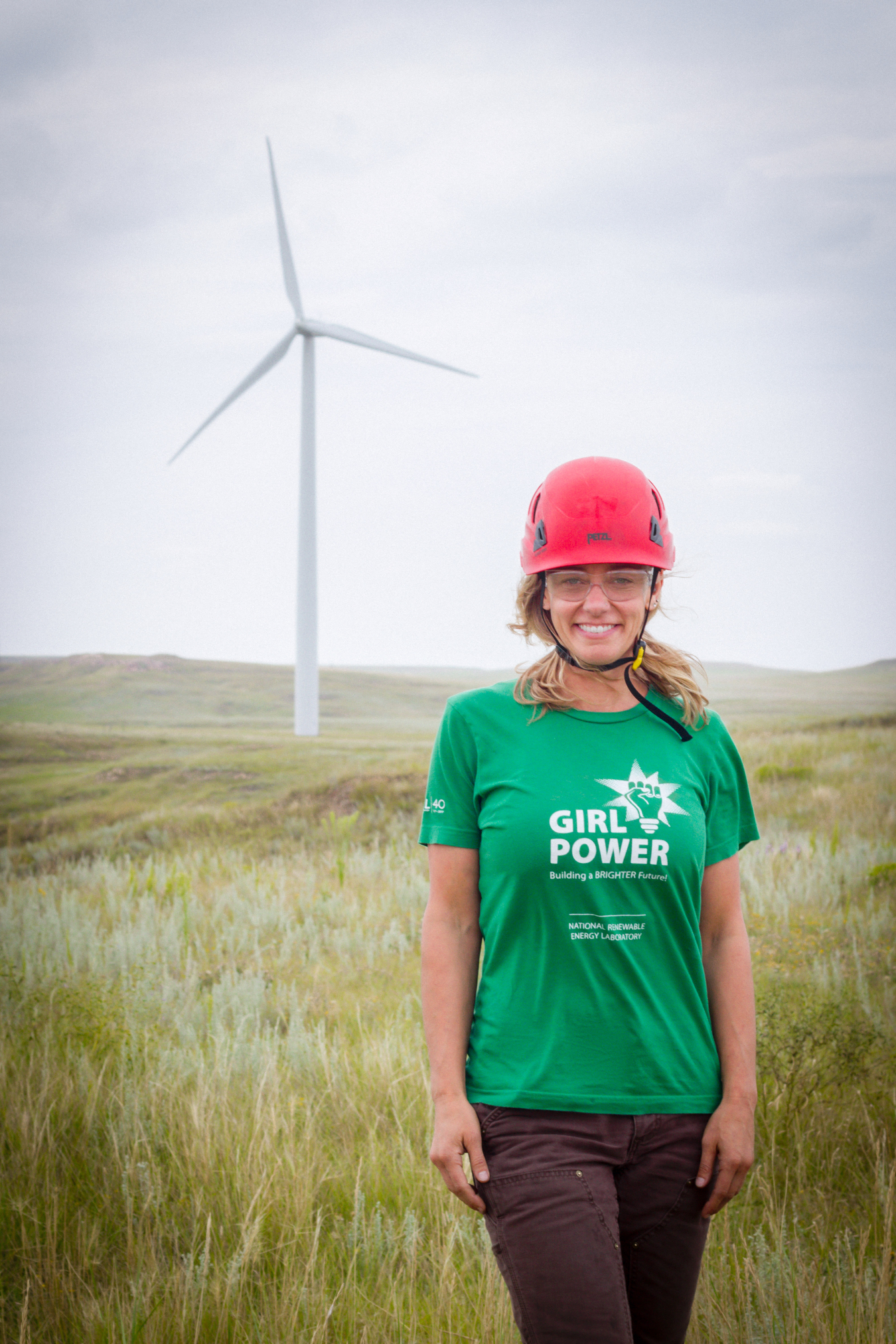Learn why Heidi Tinnesand loves her job as a mechanical engineering researcher at the National Renewable Energy Laboratory.
December 12, 2019
Heidi Tinnesand joined the National Renewable Energy Laboratory (NREL) as a mechanical engineering researcher in 2015. At NREL, Heidi works at the Flatirons Campus on projects for the Department of Energy Wind Energy Technologies Office. Her projects focus on conducting wind and water resource assessments, advancing distributed wind, and furthering public adoption of wind power through outreach, education and workforce development. Prior to joining NREL, Heidi worked for Vestas Americas and DNV GL. Her work there included analyzing data to choose suitable sites for prospective wind farm projects, designing and installing equipment for measuring atmospheric conditions and testing the power output from operating wind turbines. Heidi holds a bachelor’s degree in mechanical engineering from Portland State University.
What inspired you to work in STEM?
One of my early supporters was my grandfather, who was a machinist and tool and die maker professionally. He took note of what he considered my mechanical aptitude and urged my parents to foster and encourage that aptitude in me. Having the support of my grandfather, mother, and father was influential as I struggled with advanced science and math topics. My grandmother got her MBA at a time when very few other women held this type of degree, which made me believe at a young age that women could do anything they wanted to do. My father was a high school chemistry and biochemistry teacher and one of my earliest role models. His knowledge and understanding of the world were incredibly inspiring. It was many decades before I finally accepted the possibility that he might not know everything about how everything worked. As I grew up, my father welcomed me to help him with home renovation projects and to hang out in the shop in the back yard – a place I loved.
What excites you about your work at the Energy Department?
I love being able to go to work every day and collaborate with brilliant individuals who are using their talents to improve our energy generation systems. I love being able to think about solutions to big problems, and to use my creative mind to find innovative new answers. Working at a national lab offers me a unique ability to work on projects where profit isn’t the biggest driving factor. One of the big roles I play is to convene stakeholders and foster collaborations between entities that wouldn’t naturally work together. Bringing these individuals and groups together enables new partnerships to form and often produces novel solutions to persistent problems.
How can our country engage more women, girls, and other underrepresented groups in STEM?
One of the most important challenges is for people to see others that look like them in professional roles. If people don’t see anyone in a professional role who resembles their background, it makes it hard for them to visualize themselves in the role. Change takes time and persistence. We need to begin supporting women when they are children and continue supporting them as they go through school and begin careers. This support needs to be cultural, educational, professional, and emotional as they navigate a male-dominated workforce. We need more practical opportunities for young girls to be curious about the world around them and explore how things work. We need to make sure young women have access to strong curriculum in science and math as they grow up.
When it comes to more women and other underrepresented groups in STEM, I think we need to start in communities, with parents of the young folks we hope will join our workforce. We need to ensure they have a strong professional community to support them and make them feel like they belong. This includes having opportunities for senior design projects, technical competitions, research challenges, training, internships, mentorship, etc.
Do you have tips you'd recommend for someone looking to enter your field of work?
The biggest advice I usually tell young women is to follow all of their passions, because you never know what unique combination of skills will make you successful at whatever challenge you pursue.
Of course, candidates need to acquire a good education, with a degree in math, science or engineering. I strongly suggest they find practical opportunities for hands-on experience. Find someone to mentor and support you. I have found that professional societies of women in wind energy have been the most helpful source of mentoring and encouragement for me. The more I connect with other women in science and engineering the more empowered and excited I feel.
When you have free time, what are your hobbies?
I love wind in all its forms. I learned to fly airplanes when I was young. Later, I learned to sail boats. Now I work to harness the wind to provide energy for our world. One of my biggest passions outside of work is rock climbing and exploring the outdoors. I traveled for a year on my own and went all around the world, visiting New Zealand, Australia, and countries throughout southeast Asia. All my experiences have convinced me to spend my professional life making the world the best it can be.
Learn more about our programs & resources for women and girls in STEM at http://www.energy.gov/women

